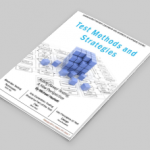 In software testing, we need to devise an approach that features a gradual progression from the simplest criteria of testing to more sophisticated criteria. We do this via many planned and structured steps, each of which brings incremental benefits to the project as a whole. By this means, as a tester masters each skill or area of testing, there is always something worthwhile to try next. Important aspects are:
In software testing, we need to devise an approach that features a gradual progression from the simplest criteria of testing to more sophisticated criteria. We do this via many planned and structured steps, each of which brings incremental benefits to the project as a whole. By this means, as a tester masters each skill or area of testing, there is always something worthwhile to try next. Important aspects are:
Trust
Testing and development teams must build a trusting relationship with each other especially within the process of product development.
Constructive Communication
Initial communication between testing and development teams must be quite open, transparent, constructive and encouraging. This is the phase that determines the course of action for testing, as well as any alternatives. The future of the software, its accuracy, and its subsequent successful implementation, depend on good communication. But don’t make this communication too formal.
Documentation
Ensure that testers have sufficient documents in hand before starting the analysis and testing the product. Appropriate analysis of these documents is very important to remove any ambiguity/confusion/loop-holes in understanding the customer’s requirements. Test cases and scenarios will emerge from these requirements.
Open Mindedness
A tester has to go in with an open mind in all discussions. Only then will they be able to understand developers, the development process and customer requirements. Then they will plan the testing requirements accordingly.
Variables
Keep all important variables in the loop is important to testing and successful product development. Different variables could result in developers working on different modules, documents, testers, etc.
Learn from the Past
Keep learning from past experiences and try not to get caught with mistakes that have been made before. A common saying is – “Never repeat the same mistake twice”. It’s a mistake to test a product in a crude or unstructured manner. Learning from the past is perhaps the most potent means of improving your testing model over time.
Identify Shortfalls in Advance
Be clear about what is in the scope of testing and what is not. Clearly define what is not going to be covered in testing and understand what impact such omissions could potentially have on the product. Foresee any uncertainties or delays. It is important to understand the benefits you will derive well in advance rather than getting no benefits at the end of an exercise.
Keep Interacting
It is important that a tester continuously interact with developers throughout the entire testing process. Ultimately, the goal is to create a better product. To achieve this, both sides must work hand-in-hand to surmount all barriers, conflicts, bugs, faults and defects.


 Jaideep Khanduja
Jaideep Khanduja 















